Half day tour
This is a private tour. Only you & your group will participate.
This tour incudes private tour to following villages:
OIA (Blue Domes) - Firostofani - Profit Ilias - Akrotiri Archaeological site - Red Beach - Light House - Perivolos (black sand beach)
Starting point: your hotel
Cruise passengers: the meeting point for the tour is at the cable car’s exit in Fira town. Your guide will be waiting for you there, holding a sign with your name.
Return details: returns to original departure point - same as the meeting point
Duration: 5h
Price: 1-2 people 3-4 people 4+ people- ask for the price!
Extra 1hour -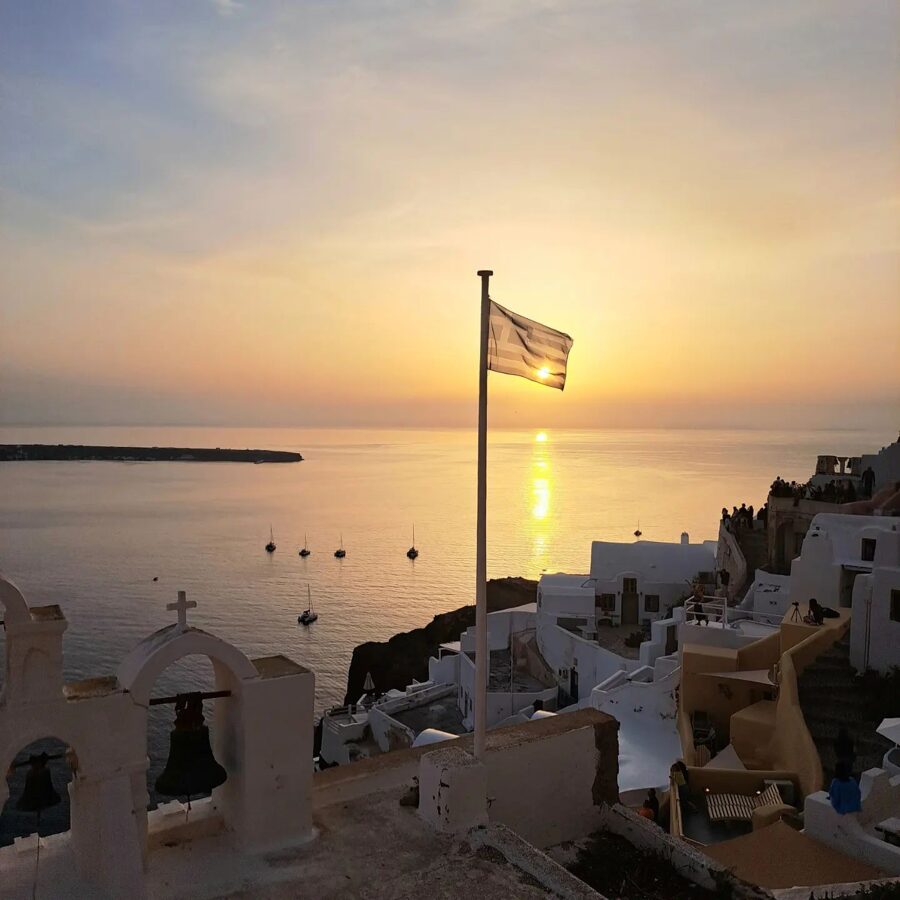
Languages: english, latvian
Included:
✓ transportation with a private car,
✓ private tour guide services,
✓ flexible departure & itinerary customized to suit your preferences, to include additional stops for shopping or relaxing,
✓ bottle of water,
✓ phone charging.
Not included:
⊘ entrance fee in Akrotiri Archaeological site,
⊘ any meal or personal expenses,
⊘ children under 5 years old will not reserve a seat on the car. They will sit on parents' lap,
⊘ tickets for the cable car if you arrive with a cruise ship (€6 for a one-way ticket),
⊘ not wheelchair accessible.
⊘ tips for the tour guide.
Our first destination gonna be Oia.
Oia is located on north-west side of Santorini (officially known as Thera), around 12 km from the island capital, Fira (Thera) in the Cycladic archipelago, Greece. It is approximately 150 meters above sea level. At the edge of the Caldera cliffs, Oia has a panoramic view across the caldera towards the volcano, Thirassia, and almost the entire island.
Oia is the most beautiful village of Santorini, best Instagram spot and mostly known as its magical sunsets, most famous Blue Domes are located in this village.
If you never been to Oia - you never been to Santorini!

We gonna visit Virgin Mary Catcholic Church or Three Bells of Fira.
In the mid-17th century, two modest cave churches were built into the then-solid cliff face. These churches were eventually destroyed as the cliff receded (due to the ongoing expansion of Fira) and an infirmary was built. This building was eventually occupied by Jesuits, who lived on the site until the land was given to the
Diocese of Santorini. The current church was built in 1757, and then refurbished and expanded multiple times over the centuries. The structure was heavily damaged in the 1956 Amorgos earthquake, after which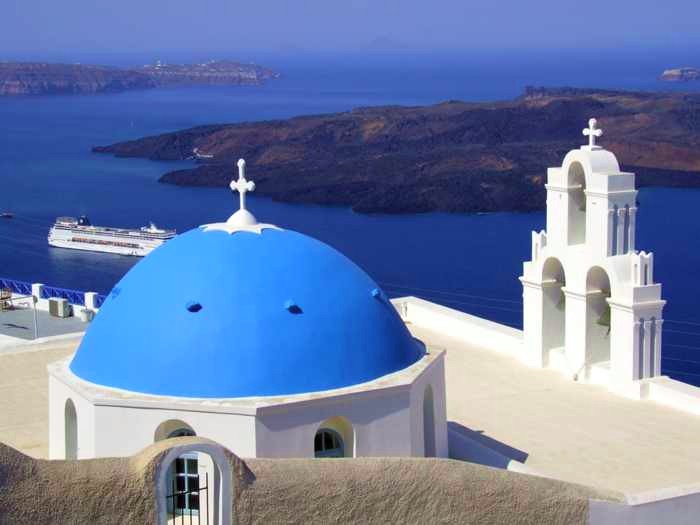 the building was restored.
the building was restored.
Next destination - Akrotiri, where we gonna visit Red sand beach and Lighthouse.
The Red Beach is located in the south part of the island, in Akrotiri village, near the famous Akrotiri Excavations site. Kokkini Paralia, or Red Beach owes its name to the original colors of the steep cliffs created from the volcanic lava. Both the road and the beach itself are covered with a characteristic reddish-black gravel. The cliffs are made of volcanic rock rich in iron. The oxidation of iron turns it red.
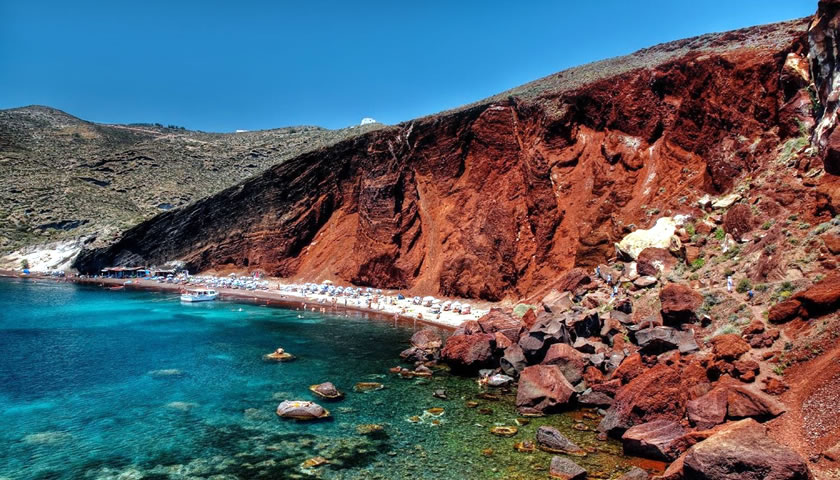
The Lighthouse was built in 1892 by a French trading company and it is considered a very important site, as it is one of the first lighthouses that were manufactured in Greece. During the first 100 years it was powered by petrol fuel and there was a person in charge of running it manually, before 1893, when it got connected to electricity. It stopped operating during World War II, until 1945 that was reconstructed by the Greek Navy.
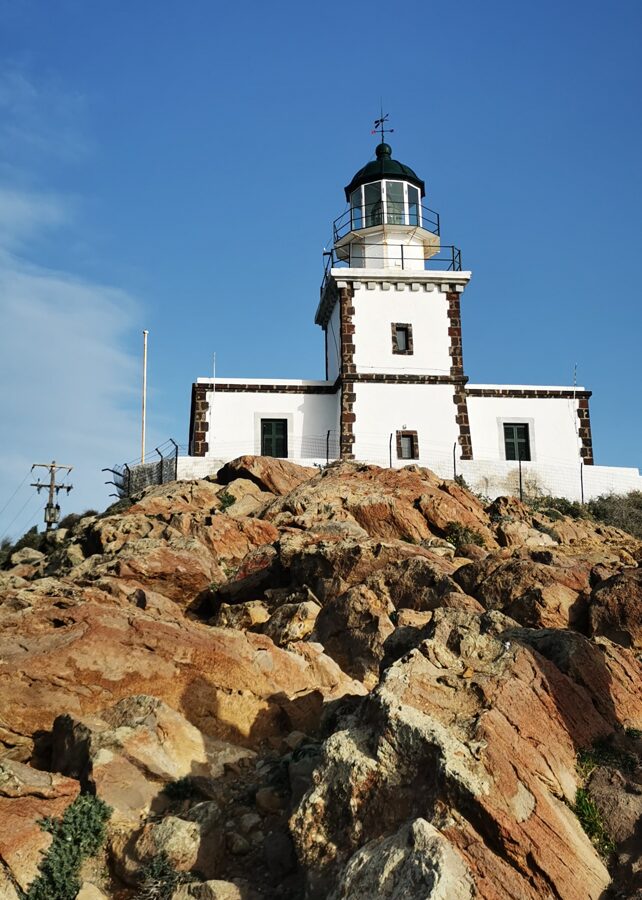
Profitis Ilias is the highest spot of the island (567 meters), it is located between Pyrgos and Kamari. From the top you will enjoy amazing view of the entire island. Almost any day of the season you can get traditional products produced by the monks from a monastery shop located on the square next to St. Nectarious church. The monastery area is closed on Sundays. On that day you can only enjoy the views from the mountain itself.
The Monastery was built in 1711 in the resemblance of a fortress and it is a stunning example of Cycladic architecture. During the first years, it played a very important role in the cultural and educational life of the people, as it operated as a school, where its students were taught the Greek language and Literature. Not only its role in the society was significant, but it also exerted economic influence, as it conducted a prosperous trade business in the Aegean and the Mediterranean Sea with its private ship. It finally went through serious damage from a severe earthquake that hit Santorini in 1956.
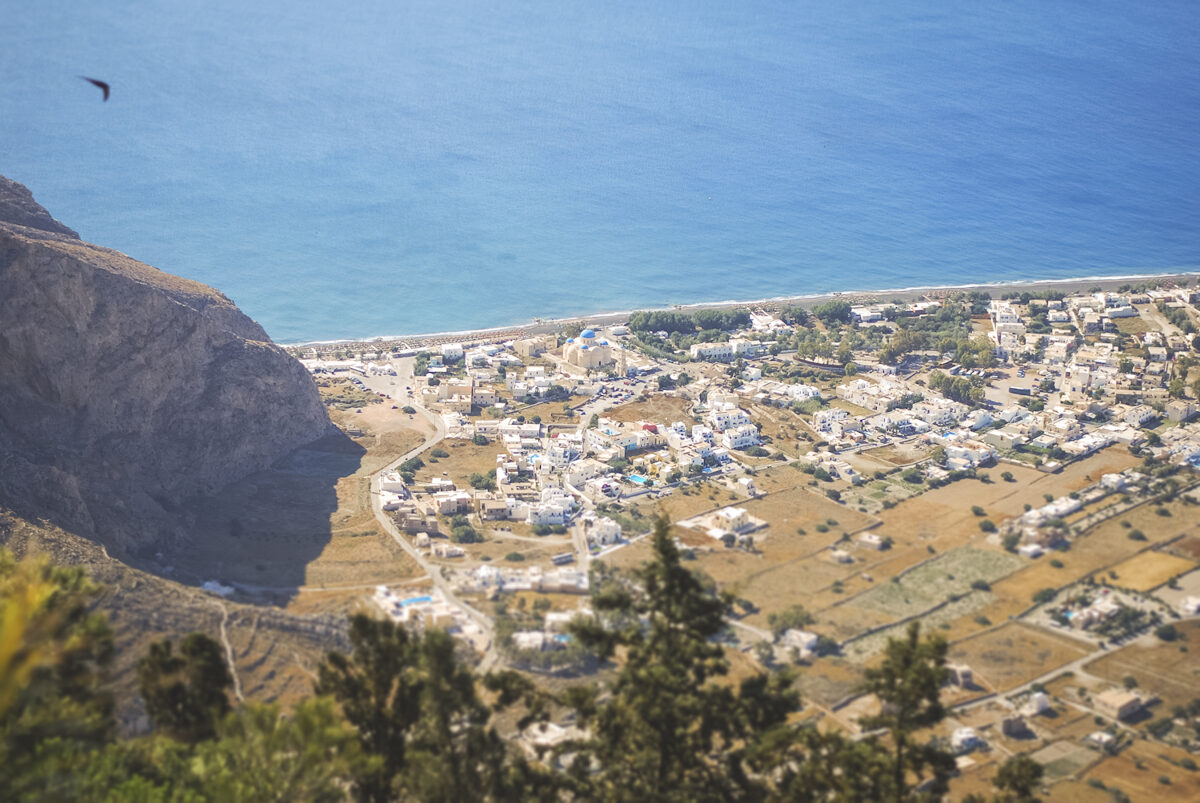
Next place we gonna visit - Akrotiri Archaeological site.
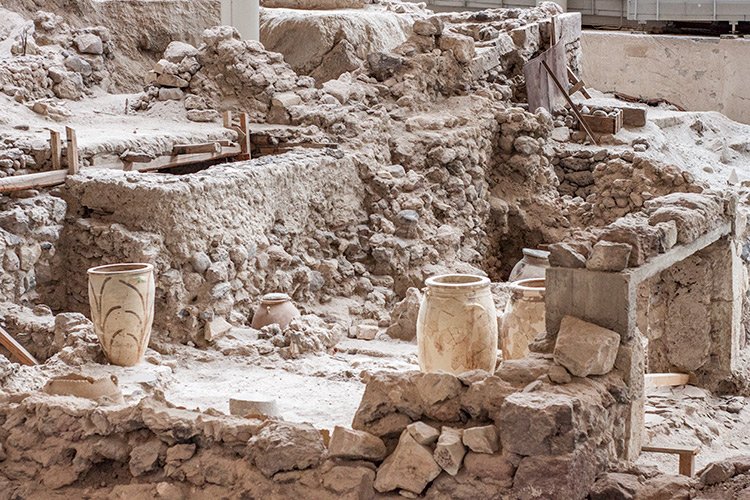
The settlement was destroyed in the Theran eruption sometime in the 16th century BC and buried in volcanic ash, which preserved the remains of fine frescoes and many objects and artworks. Akrotiri has been excavated since 1967 after earlier excavations on Santorini. Nicknamed Santorini’s Pompeii, it’s similar in that both cities are important archaeological sites buried by a volcanic eruption. Visiting Akrotiri is a window into the life of a distant people – and a different side of Santorini. Akrotiri started life as a simple fishing and farming village, growing olives and grains. By the time the eruption had finished, Akrotiri had been buried beneath a 200-foot layer of ash and debris, and the shape of Santorini had been changed for good. Covered with hot lava and piles of ash, the island was abandoned for centuries. It’s even said that Akrotiri was Plato’s inspiration for the city of Atlantis.
Inside official Greek Ancient Sites such as Akrotiri in Santorini and Parthenon (Acropolis) in Athens, only official Greek Archaeologists have permission to guide. During your private tour you can definitely be offered a drop-off at the site of Akrotiri by your driver, wonder inside on your own, and once you finish your visit be collected by your driver to continue your private tour. Your private driver-guide is not permitted to guide you inside the actual site or the ruins.
Our last destination gonna be Perivolos (black sand beach) - this beach is covered in black lava sand, which is typical in Santorini beaches. It is a long, well-organized beach with a plenty of beach bars, tavernas, shops and many water sports options.
Here you gonna have a chance to finally have some free time - relax, catch some tan or have a swim. We would recommend you to take swimwear, sun lotion and beach towel with you. 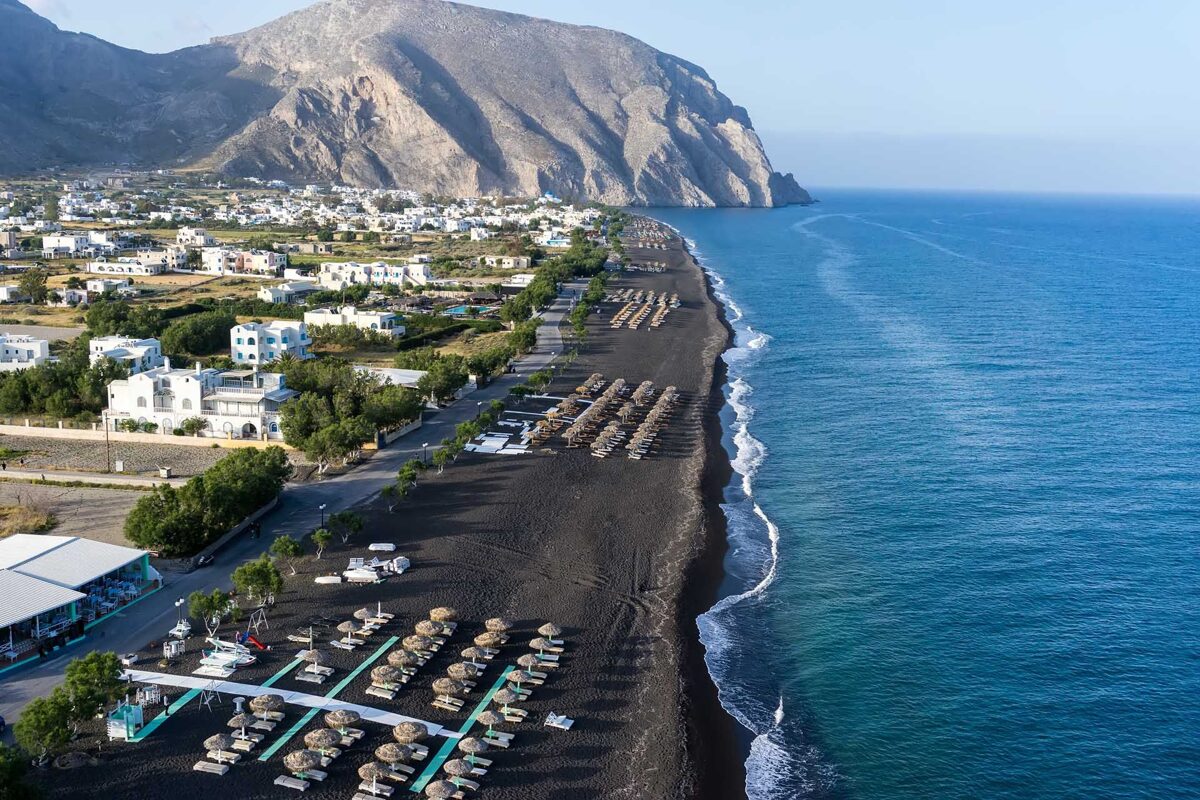
Free time: 1hour
After Perivolos beach we will drive you back to the starting point!